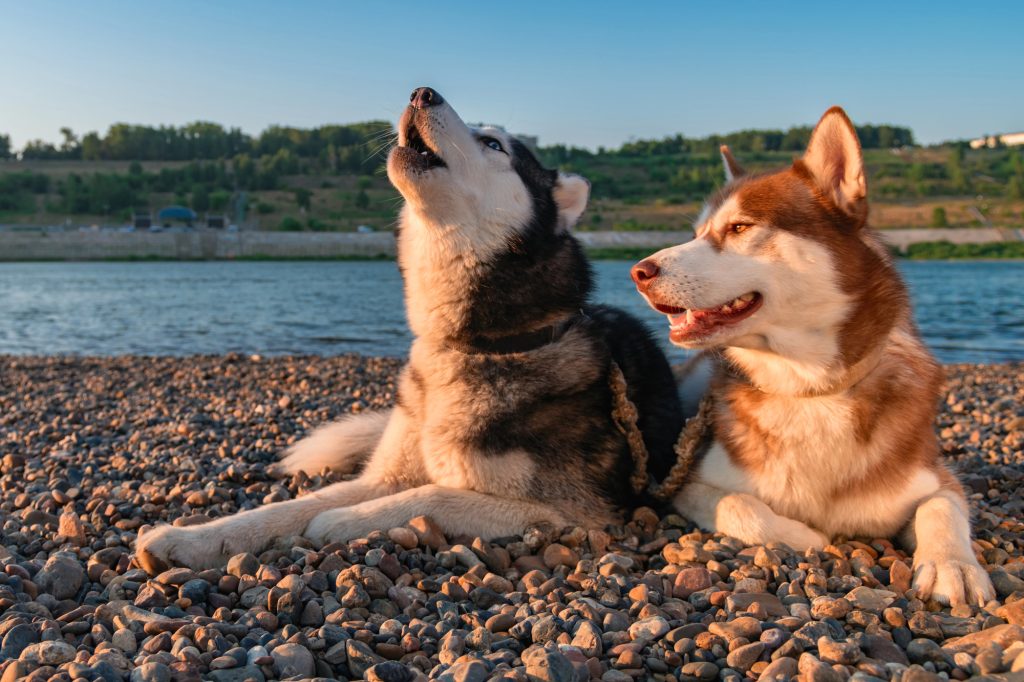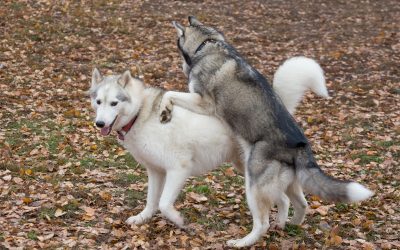Howling is a normal behavior for many dogs; some dog breeds howl more than others. However, excessive howling — howling in a dog that’s normally quiet or howling that’s different from your dog’s normal communication sounds — can indicate an issue. Keep reading to discover reasons for dogs howling, understand when you should be concerned and get some guidance for managing nuisance howling in dogs.
Common Reasons Why Dogs Howl
Howling can sometimes leave us wondering what our furry friends are trying to communicate. Let’s explore some of the most common reasons behind those soulful howls.
Communication and Attention Seeking
Howling in dogs is a form of communication, so it’s important to try to understand what’s going on with your pet when it howls. Dogs often howl if they need attention, want to be heard or have something urgent to communicate to their owner.
Anxiety and Separation Distress
If your dog is howling a lot when no one is around or when potentially frightening things are happening, such as a thunderstorm, your dog’s howl could be a sign of anxiety or separation distress. Anxiety-related howling may come with other behaviors that indicate anxiety, such as shaking, hiding or whimpering. Dogs that experience separation anxiety may scratch at the inside of doors, chew on furniture or other items or damage dog beds or toys by tearing at them.
Responding to Sounds
Many dogs howl in response to other noises, sometimes high-pitched sounds humans can’t hear. They may howl when they hear alarms, music or sirens, as such sounds can trigger a dog’s instinct to vocalize. And because dogs communicate in part by howling, they may respond when neighborhood dogs howl or when wolves howl if you live in the country.
Territorial Behavior or Alerts
Howling can be a natural behavior in response to potential threats. Dog howling could indicate that their territory is being breached by other animals or there’s something they want their owner to know about.
Medical Reasons
Howling may be a way dogs vocalize pain. In certain breeds that may be prone to howling in general, cognitive decline in old age could increase howling, as dogs may howl without obvious reasons. If your dog is engaging in excessive howling or howling behavior that’s unusual for it, consider consulting a veterinarian to ensure there are no medical reasons for the behavior.
How to Determine the Cause of Your Dog’s Howling
Observe the Context and Timing
Pay attention to when, where and why howling seems to occur. It may be helpful to keep a notepad with details about howling times and triggers. For example, you might record whether your dog howled at certain times of the day, after a specific sound or when you left the home and your dog was alone. This can help you determine whether your dog feels anxious or protective and that leads to howling.
Check for Other Symptoms
Be aware of other signs that might indicate your dog is howling because of a medical issue or anxiety. Pacing, drooling, destructive behavior, whimpering and flinching away from certain types of touch can all indicate either anxiety or a medical issue. If these symptoms are present alongside abnormal howling for your dog, call a vet.
Use Monitoring Tools
Tools like Halo Collar can help you monitor your dog’s behavior so you can understand patterns and potential triggers for howling. For example, if you have a large yard your dog can explore, you may not realize what’s triggering howling behavior when your dog comes back inside. By tracking activity with help from Halo Collar or other monitoring tools, you can discover what area of your yard leads to howling, which might help you discover the source of your dog’s concern.

When Should You Be Concerned About Your Dog’s Howling?
Excessive and Unexplained Howling
While certain breeds do howl more than others, if your dog’s howling is excessive for your pet and you can’t identify a clear cause, such as a threat or response to other animals, the howling could be a sign of pain, anxiety or other distress that needs to be addressed.
Changes in Howling Patterns
You know your dog, and you’re probably used to your dog’s howling behaviors. If those behaviors change suddenly, it can be a sign that there’s an environmental factor negatively impacting your dog or an underlying health issue. Consulting a vet to help ensure your dog’s well-being can be a good idea.
Accompanying Behavioral Changes
Another time to be concerned is when howling is combined with other behaviors like lethargy, appetite loss or aggression. In short, if your dog is howling and behaving oddly in other ways, call a vet.
Tips for Managing and Reducing Howling Behavior
Positive Reinforcement Training
Use positive reinforcement training techniques to reward quiet behavior or a reduction in howling, such as giving attention and treats when your dog isn’t howling versus when it is. If you’re not sure how to use this type of training with your dog, consider consulting a certified professional dog trainer.
Provide Mental and Physical Stimulation
Provide plenty of exercise and mental stimulation, such as interactive toys and puzzles, to reduce boredom-induced howling in your dog.
Create a Safe and Comfortable Environment
If howling is related to anxiety, take steps to make your dog feel safe and comfortable when it’s alone. Consider crate training and add familiar scents, textures and toys to your dog’s space to help it feel soothed.
Use of Modern Technology for Better Management
Create virtual boundaries with tools like Halo Collar to keep your dog safe, track your pet’s activity and receive alerts that may help you understand and reduce howling triggers.
Help Your Pup Find Its Happy Howl!
Some dogs howl more than others, and for any dog, a little bit of howling is likely a normal behavior. But when howling becomes excessive or isn’t normal for your dog, it can be concerning. Being observant of your dog’s behaviors and activity and using tools like Halo Collar to monitor it and manage where it goes can help you get to the bottom of howling so you can support a healthy, happy life for your pet.










